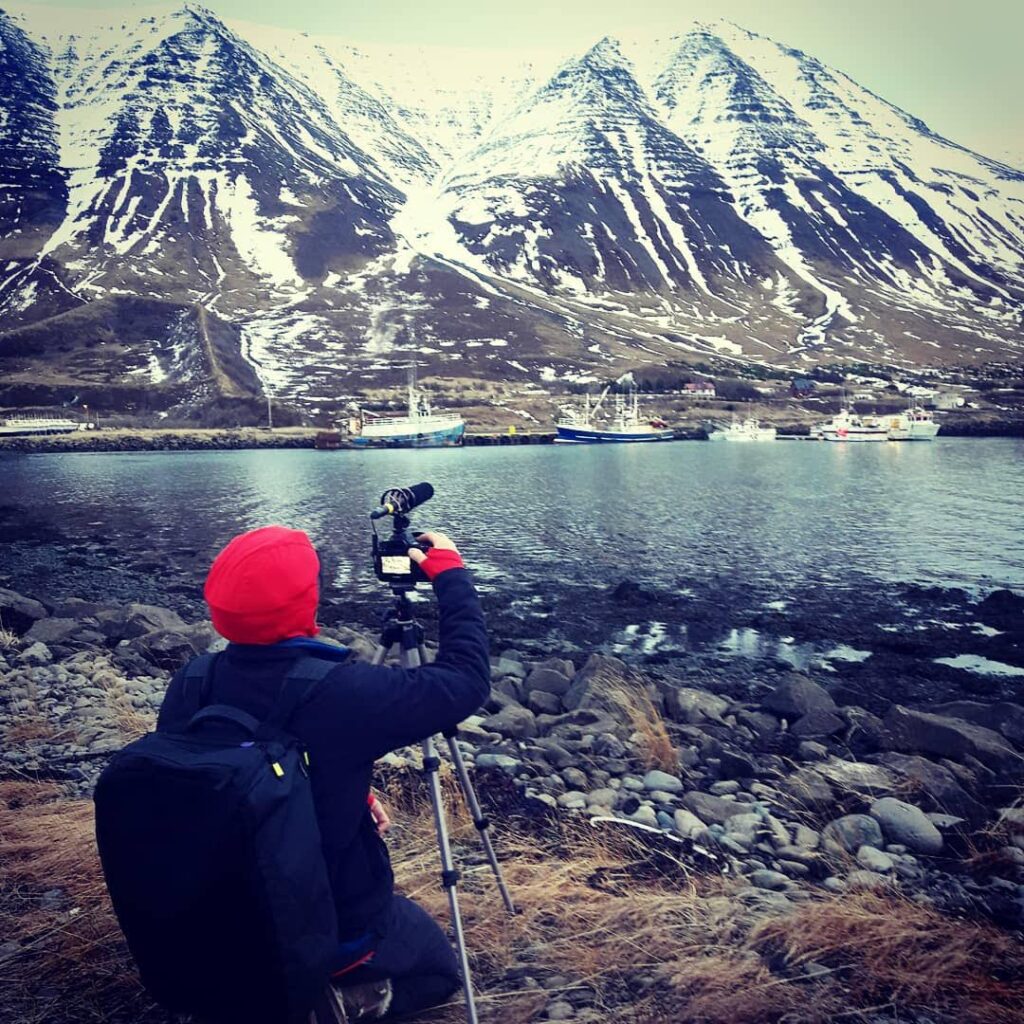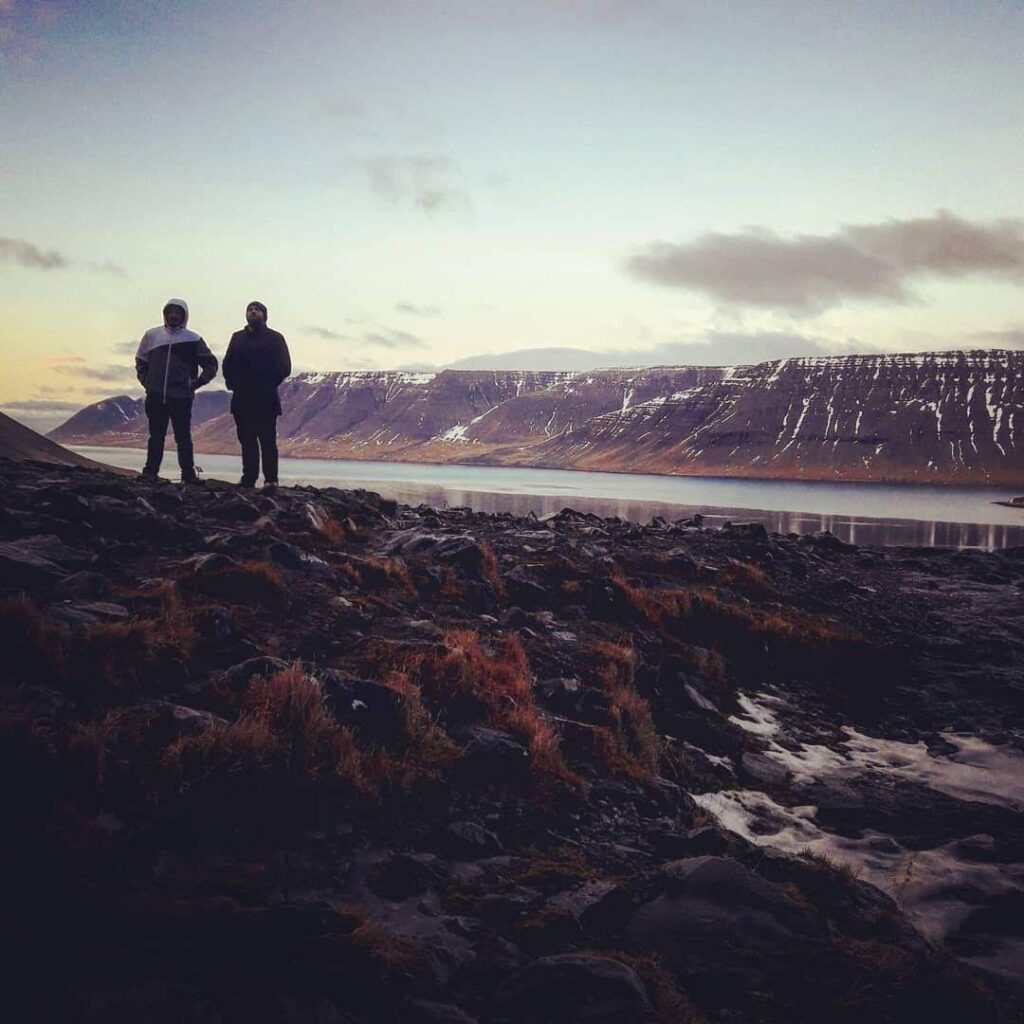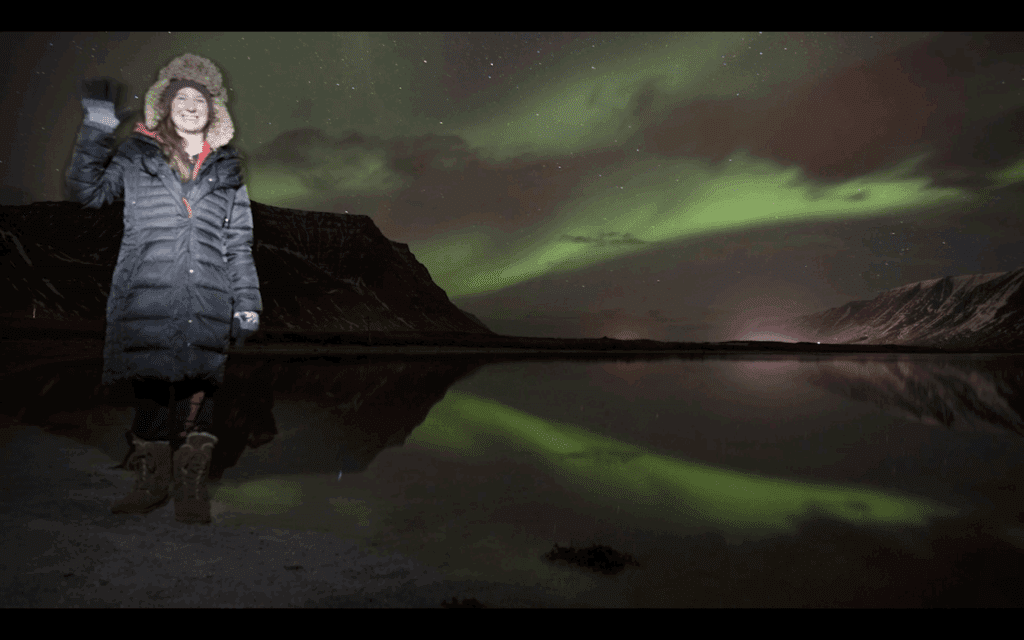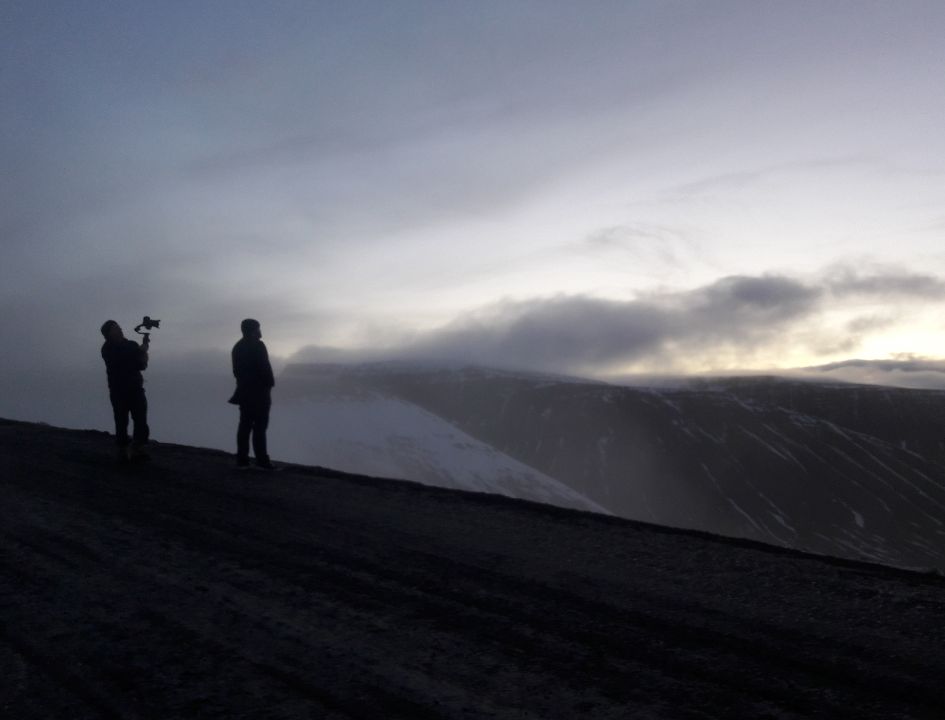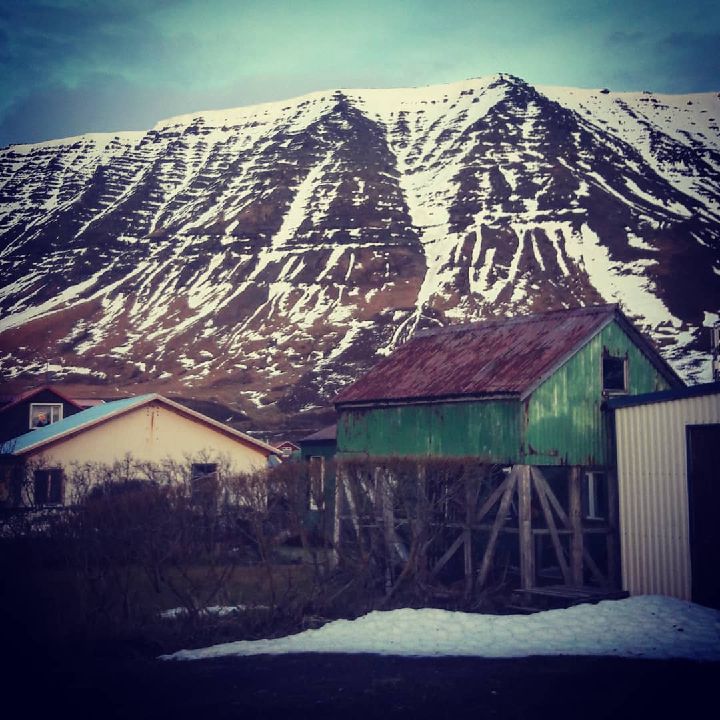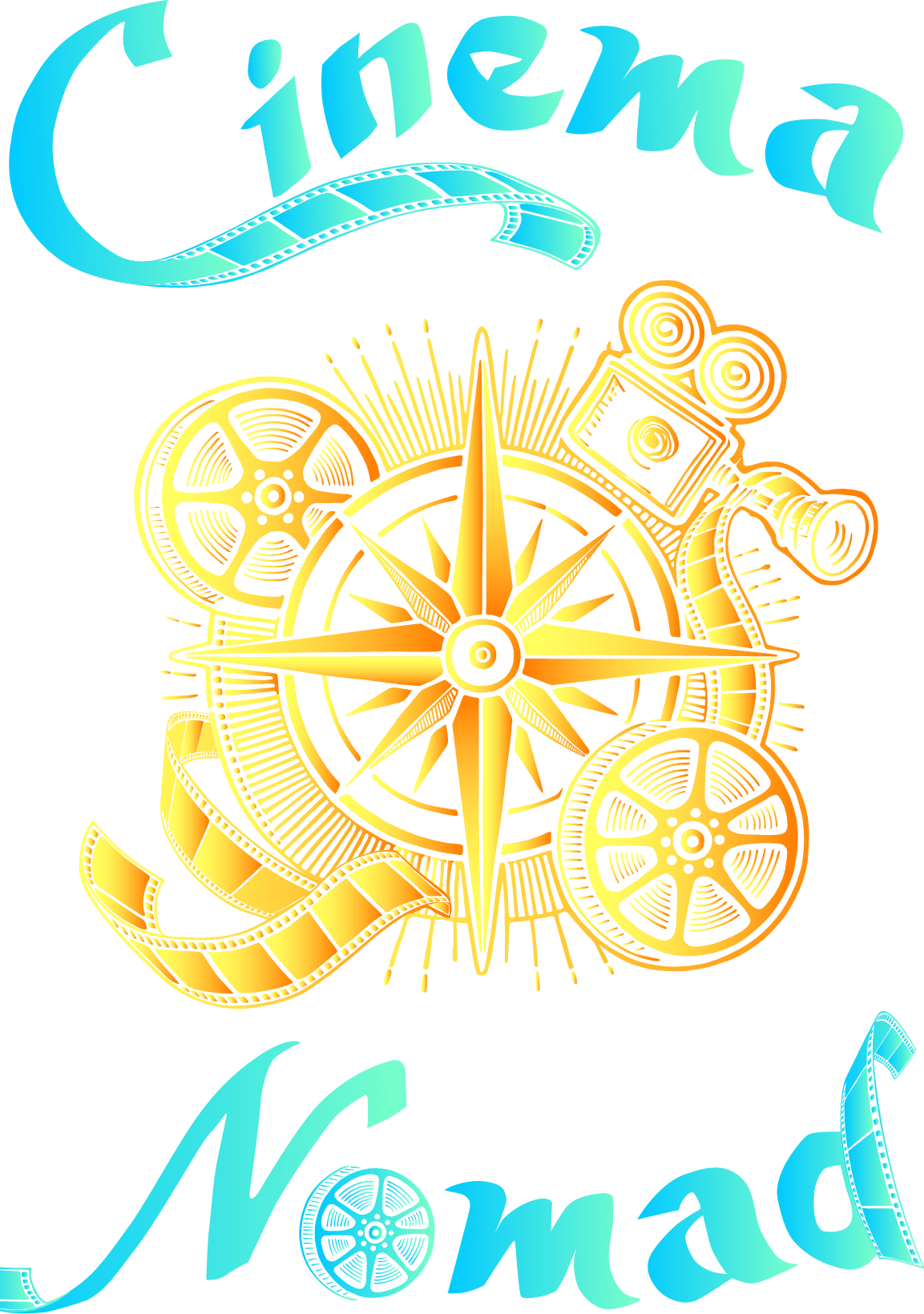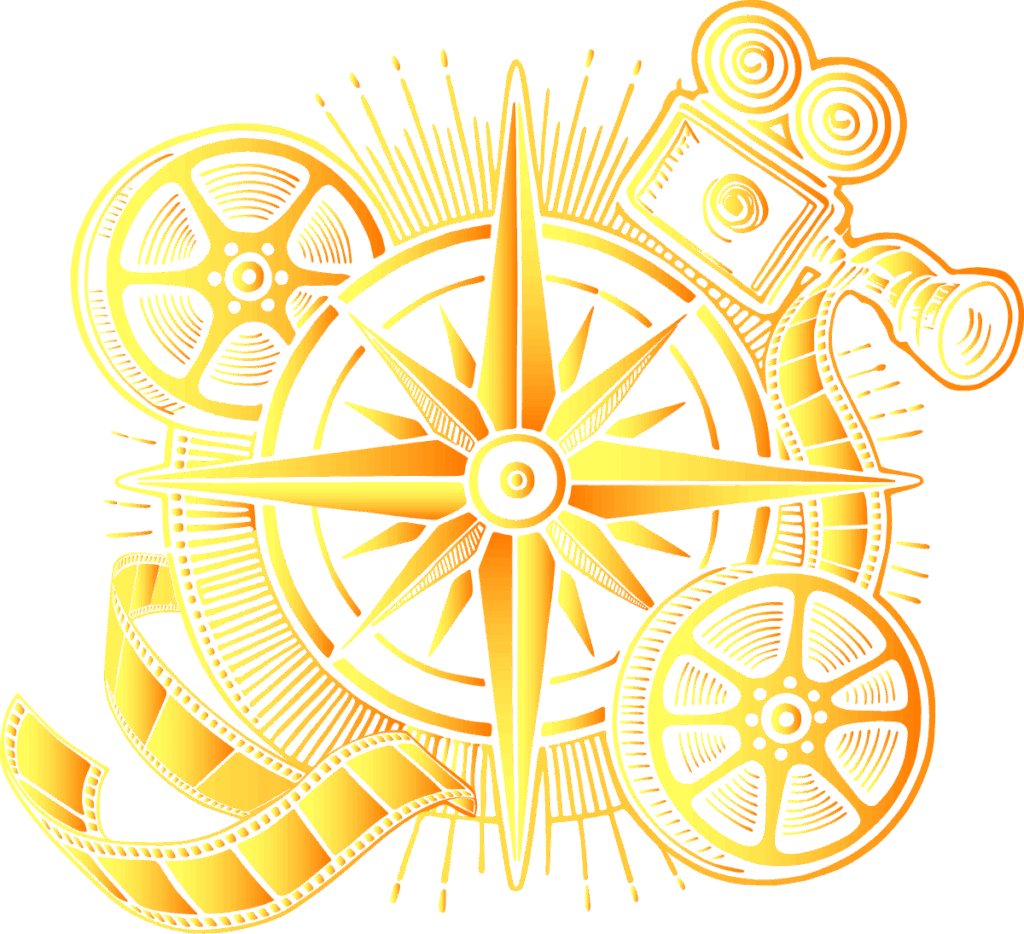
Iceland
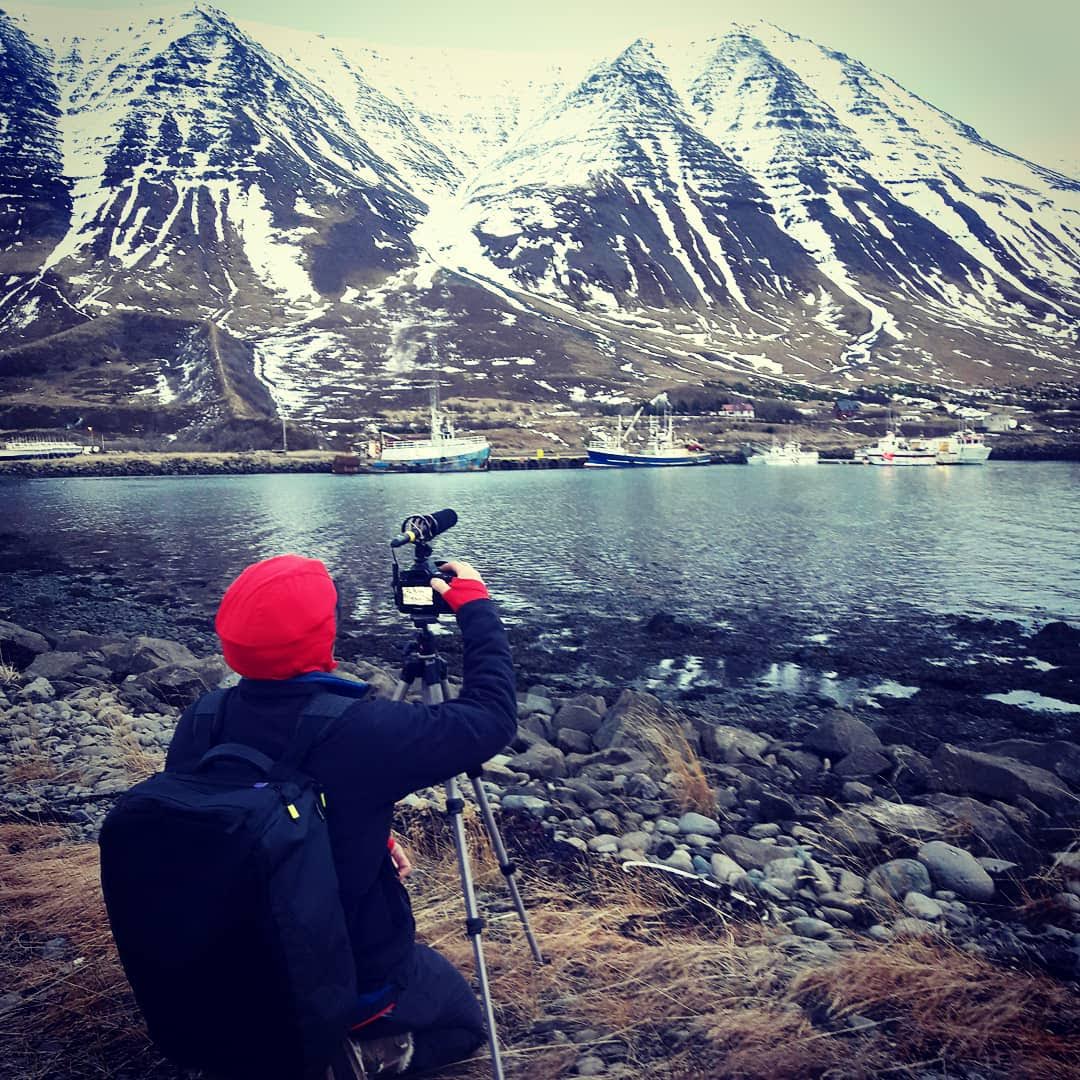
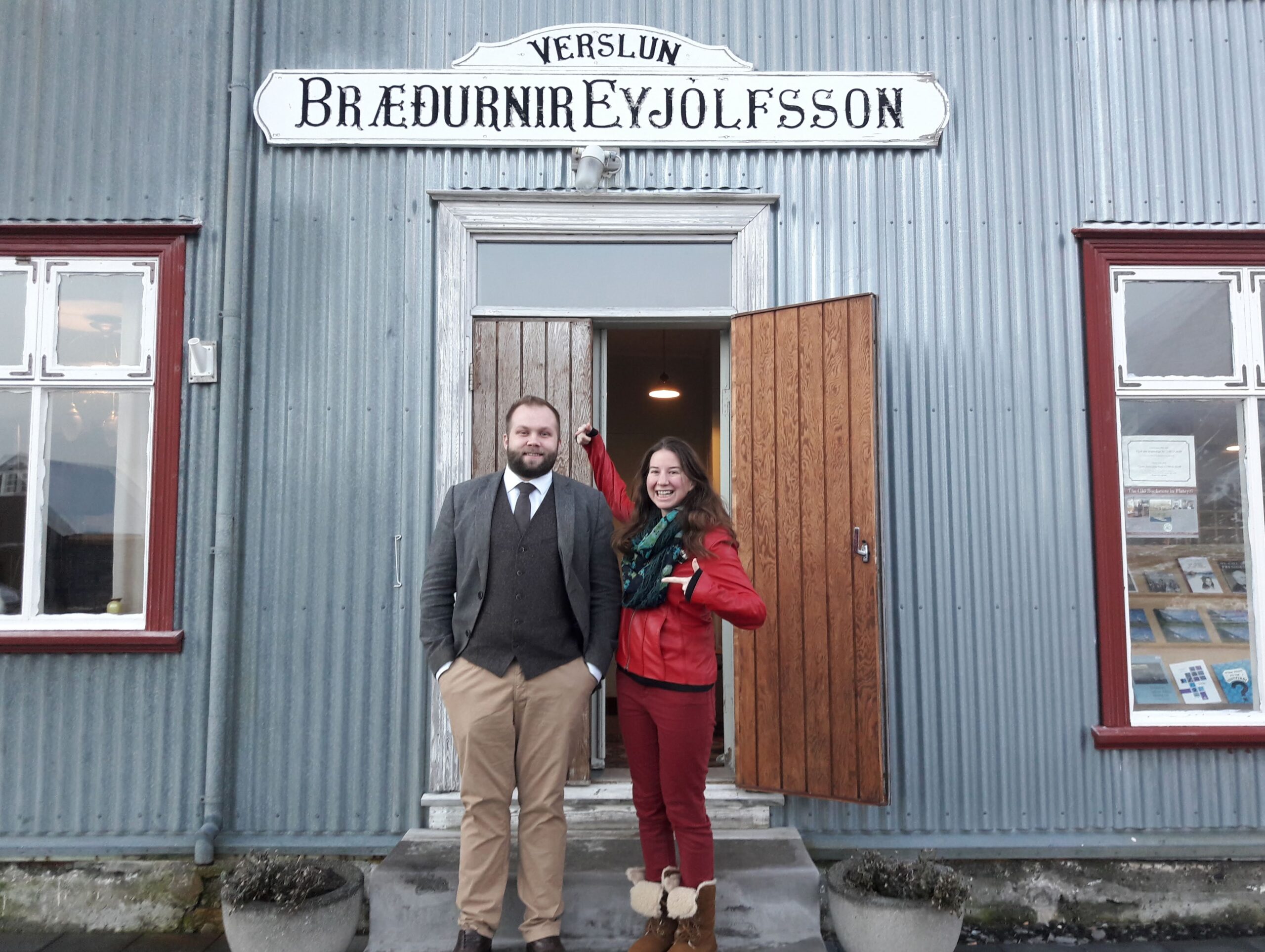
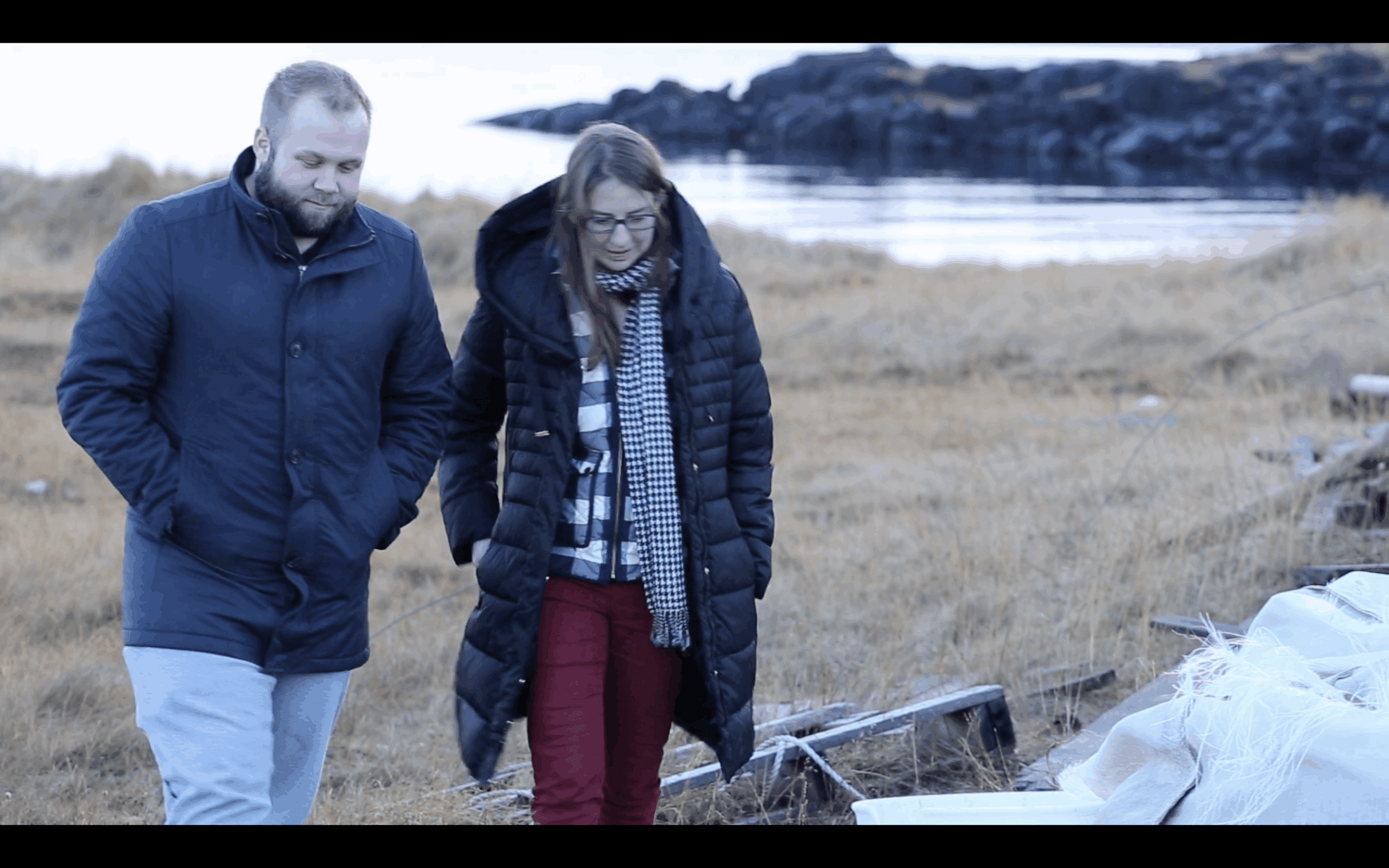

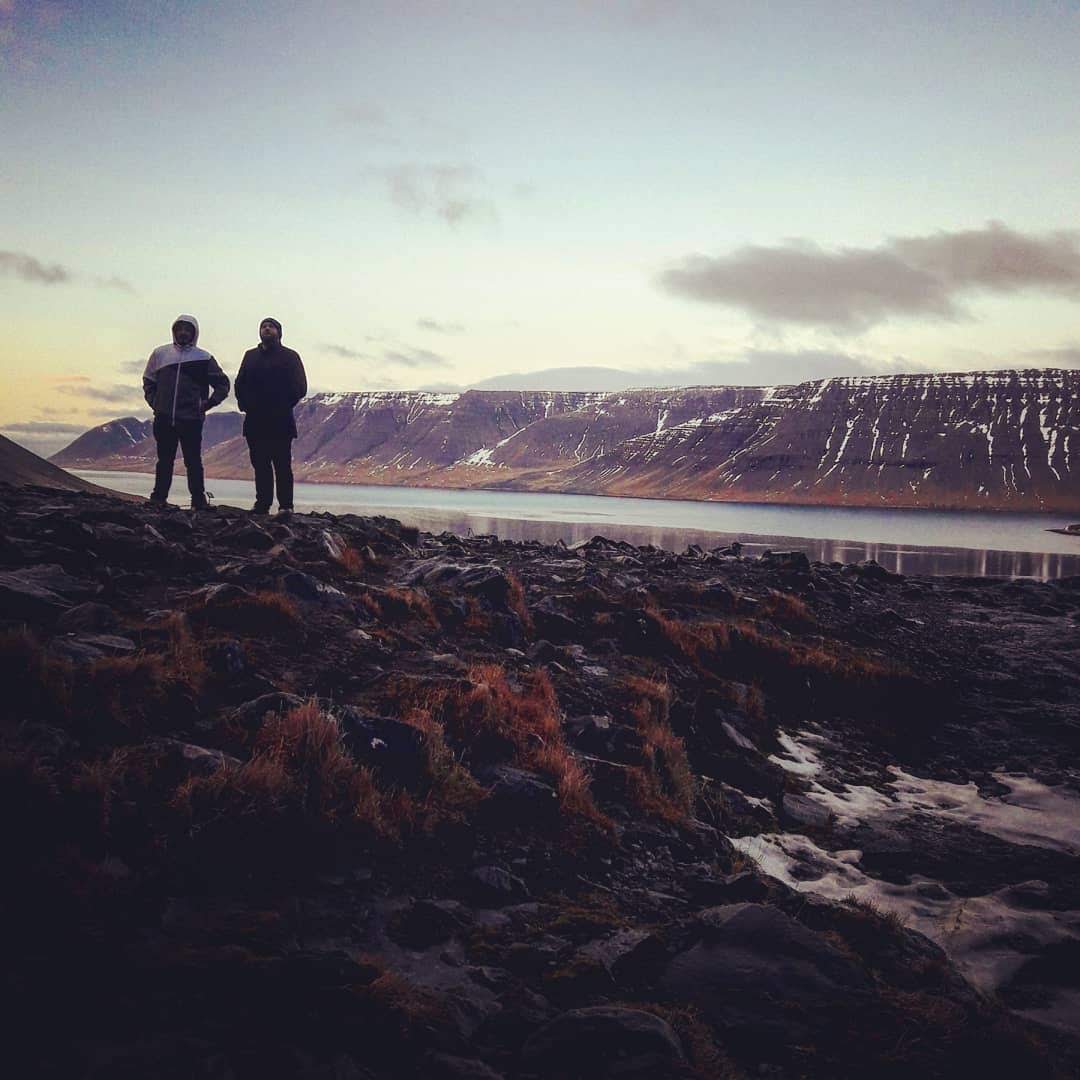
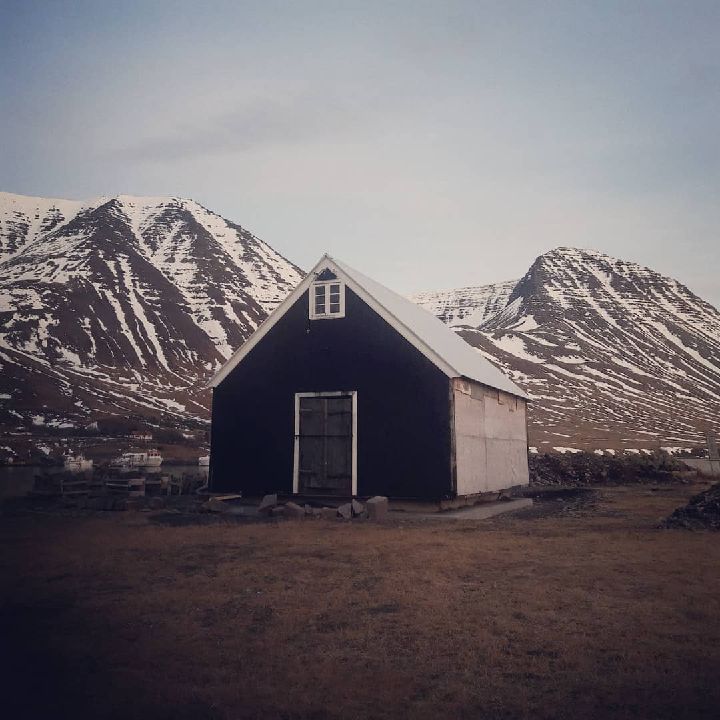
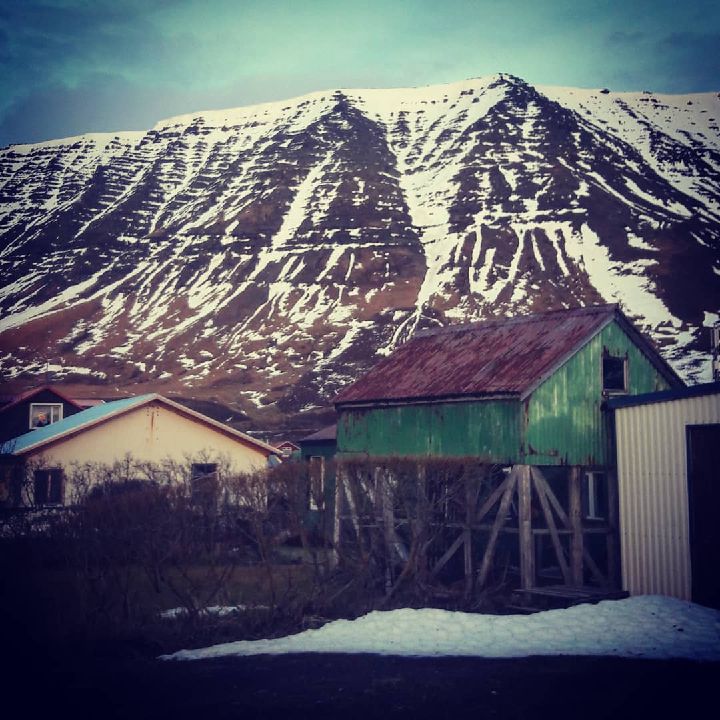
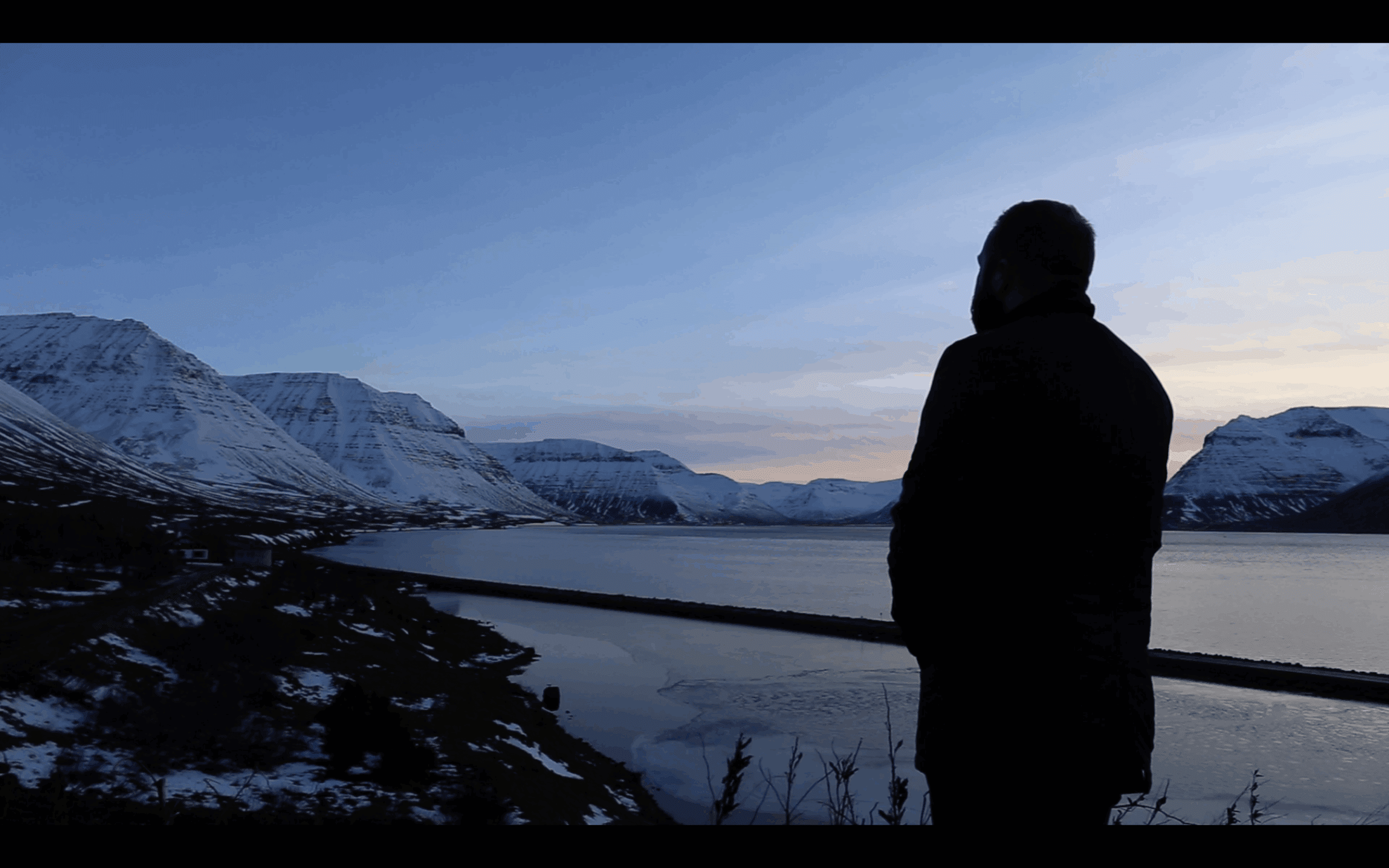
103: Iceland
We travel towards the Arctic Circle during the Winter Solstice to experience the Northern Lights and quirky Christmas antics. Our entrepreneurial filmmaker, Eyþór, lives in Flateyri, a small town in the Westfjords, where he owns and operates the oldest bookstore in Iceland, passed down from his great-grandfather. In Iceland, democracy thrives and storytelling is cherished as an age-old tradition.
Where Were You at 33?
Name: Eyþór Jóvinsson
Place: Flateyri, Iceland
Age at Filming: 33
Personal logline: Bad decisions make good stories.
Directed by Eyþór: “Sker” (2013), “Amma” (“Last Christmas”) (2015), “Arnbjörn” (“The Genealogist”) (2018), Litla Stund hjá Hansa (“Playing It By The Ear”) (2016)
Eyþór’s “desert island” films: “Nebraska” (2013) directed by Alexander Payne, “Harry and Tonto” (1974) directed by Paul Mazursky, “Noi the Albino” (2003) directed by Dagur Kári, “The Shining” (1980) directed by Stanley Kubrick
Eyþór’s “guilty pleasure:” “Family Guy”
Follow Eyþór: https://www.jovinsson.is/
Eyþór’s Instagram:
@Jovinsson
Eyþór’s Bio: Eyþór is a filmmaker, publisher and bookseller, based in Flateyri, Iceland. He has a nomination to the Icelandic Film Academy Awards. Eythor is the founder of the Comedy Film Festival in Flateyri and is the owner and store manager of the Old Bookstore in Flateyri, the oldest original store in Iceland, founded by his great-grandfather more than 100 years ago. He loves to cook, take photos and play badminton.
Cinema of Iceland
Storytelling is a big part of Icelandic culture and we know a lot of this history because of the stories that the early settlers of Iceland wrote down more than one-thousand years ago. These viking stories are now known as the “Sagas,” widely read in Iceland and around the world. Sagas are the stories the Vikings wrote as historical dramatizations, written in prose chronicling events that took place in the 9th, 10th and 11th centuries.
The Icelandic language has not changed in over 1,000 years and as a result can still be read today with complete comprehension. This provides not only entertaining stories of conquering Kings and sea faring Vikings which have become common folklore across Iceland, but it is a written history which details the genealogy and heritage of most Icelanders today.
Iceland’s true cinema culture took off in the late 1990’s and early 2000’s.
Until the institutionalization of national television in 1966, the majority of Iceland’s films were shot guerrilla style with 16mm cameras by mostly amateur filmmakers with a love for storytelling.
In the early 1900s, some documentaries were filmed, but the first true feature film known to be shot in Iceland wasn’t until 1921,“Sons of the Soil,” directed by a Danish actor and filmmaker, Gunnar Sommerfeldt.
A couple of years later, a local photographer, Loftur Gudundsson, directed the short film,”The Adventures of Jon and Gvendur,” inspired by the comedies of Charlie Chaplin. This is considered to be the first fully Icelandic film.
After his film career took off, Loftur Godmundsson’s production company, the Icelandic Film Corporation, grew to become the leading producer of Icelandic cinema.
Slowly in the 1960s and 1970s, more serious attempts at feature films took root, and in 1991, Iceland received its first Academy Award Nomination for Fridrik Thór Fridriksson’s second feature film, “Children of Nature.” “Children of Nature” is about a retired farmer estranged from his daughter, who while living in a nursing home, escapes with a fellow resident, a former childhood friend, Stella. Together the couple steal a jeep and return to their hometown to reminisce and spend quality time with each other.
In 1978 the founding of the Icelandic Film Fund also encouraged the growth of the film industry and since then, the Icelandic government has been a source of funding films for its filmmakers.
In the 1980’s and 1990’s, filmmakers such a Ágúst Guðmundsson, Hrafn Gunnlaugsson and Guðný Halldórsdóttir came to the forefront of Icelandic directors paving the way for the slightly more internationally known filmmakers of the 2000s. These filmmakers of the 2000s, include, Benedikt Erlingsson’s, known for his 2013 quirky flick “Of Horses and Men;” Baltasar Kormákur, who’s “101 Reykjavik” defined Icelandic culture for the millennial generation; and Dagur Kári, who’s cult-classic 2003 film, “Noi the Albino,” struck-home with Icelanders living outside of Reykjavik. “Noi the Albino” is loosely based on the town of Flateyri.
Because of its landscape and fantastic light, many Hollywood films have been shot in Iceland, including “Batman Begins,” “Star Trek: Into The Darkness,” “Star Wars: Rogue One,” James Bond’s “Die Another Day,” “The Secret Life of Walter Mitty,” “Prometheus,” “Interstellar,” and more! The landscape lends itself to fantasy fiction, post-apocalyptic worlds, moon landings or space adventures.
And much of the infamous epic, fantastical television series “Game of Thrones” was shot in Iceland. Everything “North of the Wall” was filmed in this land of “Ice and Fire.” Season Four of HBO’s “True Detective” was also filmed in Iceland.
Iceland has a small but extremely professional film community and it’s an amenable place for foreign film crews to shoot their epics with complete freedom in an isolated democracy.
Some Websites that discuss Iceland Cinema:
https://www.icelandicfilmcentre.is/about/icelandic-film-industry-at-a-glance/
https://www.icelandicfilms.info/
https://guidetoiceland.is/history-culture/the-story-of-icelandic-cinema
https://filminiceland.com/incentives-to-film-in-iceland/
From Sagas To The Silver Screen: Icelandic Cinema Comes Of Age
Suggested Films From Iceland
“Rams” (2015) directed by Grímur Hákonarson
“Jar City” (2006) directed by Baltasar Kormákur
“Cold Fever” (1995) directed by Fridrik Thór Fridriksson
“101 Reykjavik” (2000) directed by Baltasar Kormákur
“Of Horses and Men” (2013) directed by Benedikt Erlingsson
“Children of Nature” (1991) director by Fridrik Thór Fridriksson
“Stormy Weather” (2003) directed by Sólveig Anspach
“Nói Albinói” (2003) directed by Dagur Kári
“Screaming Masterpiece” (2005) directed by Ari Alexander Ergis Magnússon
“Land And Sons” (1980) directed by Ágúst Guðmundsson
“When the Raven Flies” (1984) directed by Hrafn Gunnlaugsson
“The Honour of the House” (1999) directed by Guðný Halldórsdóttir
Cinema Landmarks To Visit:
The National Film Archives of Iceland
Smárabíó Cinema:
https://www.smarabio.is/
Herðubíó Cinema:
https://www.herdubio.is/about
Vatnajökull National Park
Svínafellsjökull Glacier (films such as “Die Another Die” and “Game of Thrones” shot here)
The Eurovision Song Contest Museum in Húsavík: https://eurovisionhusavik.com/
Dettifoss waterfall (“Prometheus” shot here)
For a fuller list of movie locations in Iceland:
https://guidetoiceland.is/history-culture/movie-locations-in-iceland
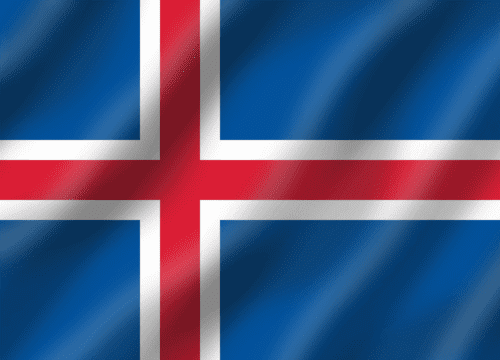
Official Name: Republic of Iceland
Population: 390,000
Capital City: Reykjavík
Form of Government: Constitutional Republic
Official Language: Icelandic
Currency: Icelandic Króna
Borders: Atlantic Ocean, Norwegian Sea, Greenland Sea
About Iceland and Flateyri
The United Nations’ World Happiness Index often names Iceland amongst the world’s happiest countries. In 2025, Iceland was ranked the 3rd happiest nation in the world. To boot, Iceland was named the “Most peaceful country on Earth” by the Global Peace Index.
Both of these “accolades” are contributed to the high standards of living and civil rights records of the country: offering its citizens free health care, free higher education, a relatively low income tax, and gender equality, which is not only practiced in society, but is protected by clear laws on the books that prevent gender discrimination in all aspects of society and guarantee equal pay in the workplace.
Iceland was the first country to elect a woman president, in 1980, Vigdís Finnbogadóttir, and the first to have an openly gay head of state, in 2009, Jóhanna Sigurðardóttir.
Even though Iceland did not fully gain its independence (from Denmark) until 1944, Iceland claims to have the oldest parliament in the world, originating in the year 930, the Althing was a place where “all free men gathered to make decisions for the betterment of society” and I heard it was quite the social gathering until 1232 when Iceland fell under Nordic rule, later to be traded over to the Danes.
While most historians agree that Iceland is indeed one of the oldest democratic institutions in the world, there is still some contention in asserting that it is THE oldest, in competition with the Faroe Islands, Isle of Man, and notably, the Iroquois Indians (or the Native American Six Nations confederacy) who’s consensus-based government can be traced back through eight centuries, arguably the oldest living participatory democracy.
Flateyri is a quiet town in the Westfjords of Iceland, especially in the winter months when the population rests at 150 people. In the summer, the population goes up to 500 as some Icelanders have summer homes there.
In the 19th century, now considered Flateyri’s “heyday,” the town was a home base for shark hunting and whaling expeditions.
Flateyri was a trading post since 1792, with an economy centered around fishing. Fishing built the economy of Iceland and until recently was the highest grossing industry in the country. Fishing has built Iceland into the modern, progressive nation it is today but it has since been beaten out by tourism as the economic breadwinner.
Tragedy struck Flateyri in 1995 when a devastating avalanche crushed a sizable part of town, hitting forty-five people and killing twenty. The avalanche completely destroyed seventeen houses. Everyone lost loved ones that night and many families ended up permanently moving out of town.
While the legacy of this natural catastrophe permeates the village today, Flateryi managed to survive and its landscape continues to inspire some of Iceland’s greatest creative minds. It has become a magnet to the film industry of Iceland.
Approximately five or six feature films have been shot in Flateyri and there’s an estimate that at least 40 of the town’s 150 remaining residents work in Iceland’s film industry, four or five of these individuals are some of Iceland’s most renown directors.
Three Things To Do in Iceland
- Visit the the Icelandic Phallological Museum
- Rent a car and drive to the various “hot pots” (hot springs) around the country
- Stake out the Northern Lights in Winter time
Stephanie’s Top 3 Travel Tips to Visit Iceland
- Visit either during the Winter Solstice or the Summer Solstice
- Pack snacks – Iceland is one of the most expensive countries in the world to dine in!
- Stay up late to see the real nightlife
Useful Links:
- Mr History’s A Quick History Of Iceland https://www.youtube.com/watch?v=mjP_AUqz2gYhttps://www.youtube.com/watch?v=ES12T3cE0xU
- Lonely Planet:
https://www.lonelyplanet.com/destinations/iceland - https://www.visiticeland.com/
- https://www.islandsstofa.is/en/visit-iceland
- https://www.adventurouskate.com/category/destinations/iceland/


